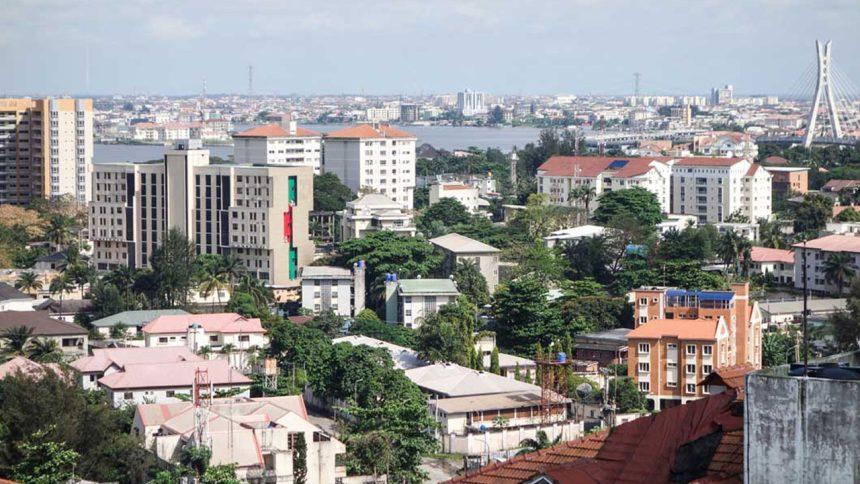Lack of affordable housing worldwide is becoming a global crisis. An estimated 1.6 billion people—one-fifth of humanity—lack access to adequate housing and basic services, according to the UN special rapporteur on the right to adequate housing, and this number could rise to 3 billion by 2030.
Over the last decade, housing prices have grown faster than incomes in most countries of the Organization for Economic Cooperation and Development (OECD).
The housing crisis is complex, characterized by a lack of units especially for low- and middle-income people, and it impacts the native born and immigrants alike. As countries around the world contend with increasing displacement, lack of reliable access to adequate housing is disrupting migrants’ integration opportunities and is generating competition between natives and newcomers that can blunt the spirit of welcome or fan anti-immigrant fervor.

As of October 2023, 110 million people worldwide were forcibly displaced, either internally or internationally. While housing shortages are particularly acute in high-income countries, three-quarters of people needing international protection live in low- and middle-income countries close to their country of origin. Here too they are rarely able to find decent housing. As of 2022, a majority of refugees, asylum seekers, and returnees in most countries did not have habitable and affordable housing, according to the UN High Commissioner for Refugees (UNHCR). In Burundi, for example, where there are about 80,000 refugees and asylum seekers (almost all of them from the Democratic Republic of the Congo), just 7 percent were reported to be living in habitable, affordable housing.
Adequate housing is recognized in documents such as the 1948 Universal Declaration of Human Rights and the 1966 International Covenant on Economic, Social, and Cultural Rights as part of the human right to an adequate standard of living. Yet whether they are forcibly displaced or migrating for work or other reasons, many migrants are particularly vulnerable to lack of access to this right. Many displaced people and others face marginalization, stigmatization, and xenophobia from host communities, which can manifest as being shut out of housing or being charged exceptionally high rates. Refugees, forcibly displaced people, and other migrants may also misunderstand or be unaware of their rights when dealing with housing providers.
READ ALSO: Meet Chief Fabian Nwaora, a strong pillar of Housing Development in Nigeria
This article examines some of the ways in which the housing crisis affects refugees, other forcibly displaced people, and other types of migrants, including in their relations with host communities. While a rapid influx of new arrivals may contribute to cities’ shortage of homes, housing problems are often created by broader issues and are pre-existing. Yet the perception that vulnerable new arrivals are to blame for a dearth of affordable accommodation can create tensions with host communities as well as barriers to integration.
Many factors contribute to the housing crisis. For one, the number of homes has simply not kept up with population growth, especially in urban areas that are getting more crowded. Globally, the population rose from 7 billion in 2011 to more than 8 billion as of this writing. About 394 million people lived in Latin America and the Caribbean in 2000, for instance, but the population is expected to reach 609 million in 2030. Much of that growth will be in urban areas, where housing is already strained. The region’s challenges are longstanding; the housing deficit grew from 38 million in 1990 to 52 million in 2000, according to Habitat for Humanity. Many of those who have housing nonetheless lack water, sanitation, and other basic essentials that would qualify their home as being adequate and safe.
READ ALSO: High Cost Of Building Materials In Nigeria And How It Affect Property Development
In the United States, profit-seeking institutional investors have bought large numbers of houses and apartment buildings, removing those units from the pool available to individual buyers. In 2021, more than 13 percent of all residential real estate purchases were by companies or corporations. U.S. construction slumped during the 2007-09 Great Recession and never returned to levels that would keep pace with demand. More recently, higher interest rates and other factors have increased costs for builders and developers, adding another construction hurdle.
Still, despite the high cost and scarce availability of shelter and short-term housing across the world, evidence shows that immigration generally boosts local economies and home values in the long term. Between 1970 and 2010, immigrants in the United States created $3.7 trillion in housing wealth, helped stabilize costs in urban areas that might otherwise have declined, and revitalized less desirable neighborhoods, without either adding to the housing affordability crisis or pricing people out of highly desirable communities, according to research by Americas Society/Council of the Americas (AS/COA) and the Partnership for a New American Economy.
Different Settings, Similar Challenges
One of the clearest examples of the challenges of the housing crisis and its impact on refugees and other displaced people is in Europe, where the arrival of 7.8 million Ukrainians after Russia launched its full-scale invasion of Ukraine in 2022 has added to pre-existing housing shortages. In Western and Northern Europe, many Ukrainian women and children—who comprise the bulk of the displaced population, given movement restrictions on military-age Ukrainian men—were at first accommodated by private households in an unprecedented show of solidarity, while others were sheltered in existing or newly built reception centers. Moving from these short-term solutions to more durable accommodation has proven difficult. Over the last two years, thousands of Ukrainian migrants have ended up homeless, at least for a period. At the same time, solidarity fatigue has begun to set in among hosts, prompting discrimination and hostility towards some new arrivals. Meanwhile in Russia, where more than 1.2 million Ukrainians fled, the government issued housing vouchers to some migrants, which contributed to price hikes and prompted frustration from Russians.
A similar dynamic is underway in many U.S. cities, where the recent surge in border arrivals has combined with longstanding housing shortages and other factors to strain housing markets and make tensions more visible. In New York City, median asking rents for all apartments hit a record $3,795 in mid-2023, and just 1.4 percent of rental housing was vacant, a multi-decade low. Meanwhile the number of people in homeless shelters essentially doubled since spring 2022, to more than 92,800 as of November. The pressure on the shelter system is in large part due to the city’s receipt of a more than 175,000 asylum seekers and other migrants arriving from the U.S.-Mexico border. The record number of arrivals has overwhelmed the shelter system and forced many migrants to sleep on the street, in the subway, and elsewhere while awaiting shelter space or other accommodations. Combined with other impacts of the arrivals, the situation has been described by Mayor Eric Adams as a nearly existential crisis whose fiscal impacts “will destroy New York City.” The city has a unique policy affirming a right to shelter, which puts the onus on the city government to find a bed for anyone who needs it. Still, to ease pressure on the shelter system, the city in October 2023 announced it would limit stays for newly arrived migrants to 30 days (for single adults) or 60 days (for families with children). While migrants can reapply for shelter, they have often must wait for more than a week, during which time they are effectively on the street. To relieve the burden, the city is offering migrants free one-way tickets to destinations elsewhere.
The housing challenge is also hampering the Biden administration’s efforts to increase admissions through the formal U.S. refugee resettlement system. After record low resettlement during recent years and amid the COVID-19 pandemic, the administration set lofty goals of resettling 125,000 refugees every year from fiscal year (FY) 2022 through FY 2024, although the actual numbers have remained far short of that ceiling. However, organizations partnering with the U.S. resettlement system are struggling to increase capacity and receive more newcomers due to the lack of affordable and safe housing they can make available to refugees. While these nongovernmental organizations (NGOs) support increased resettlement, many have also advocated for more staff and funding, especially to be able to provide adequate housing. There are dedicated federal and local funds for refugees upon their U.S. arrival, but this funding has not kept pace with the rising cost of housing. In addition, landlords may refuse to rent to refugees and other new arrivals based on their lack of credit history, financial reliance on federal or other assistance, income requirements, or lack of standard documents for renting in the United States.
In Colombia, the arrival of nearly 2.9 million displaced Venezuelans has coincided with a systemic lack of access to affordable housing. Many Venezuelans face discrimination and are forced to pay above-market rents, pushing them onto the streets or into unsafe living conditions. Colombia has a housing deficit (meaning a lack of housing or subpar housing) affecting approximately 3.7 million households—more than one-quarter of the country.
In some places, tensions have arisen not with refugees, asylum seekers, and other displaced persons but with foreign purchasers who buy up housing stock and lock out natives, often in pursuit of legal residency. Portugal, for instance, has one of the lowest average incomes in Western Europe, but its warm weather, urban charm, and other appealing qualities have made it attractive to well-heeled foreign nationals who are interested in getting a so-called golden visa. For years, people investing in a qualifying property worth at least 280,000 euros (approximately U.S. $305,000) were eligible to receive a five-year visa with a path to citizenship, which many locals claimed had driven up the cost of housing. Citing the housing crisis, policymakers eliminated this aspect of the program in 2023 although other types of investment still offer a pathway to Portuguese residence.
Efforts are underway to use creative and innovative approaches to both address how the global housing crisis is harming people—among them migrants and displaced persons—and create solutions. One example is the United Kingdom, which in the 1990s implemented a Housing First approach designed to house at-risk people (including new arrivals) as quickly as possible. In 2019, the Welsh government committed to reducing inequalities and creating sustainable accommodation through a Nation of Sanctuary plan that included funding for refugee accommodations, homelessness prevention strategies, and partnering with landlords and local authorities to support migrants’ housing needs. Additionally, after Russia’s invasion of Ukraine in 2022, the United Kingdom launched an innovative Homes for Ukraine scheme allowing UK residents to privately sponsor Ukrainians and host them in their homes. While the program had some faults and was criticized for cutting off support too quickly as well as shifting a government burden to private individuals, it nonetheless represents a novel idea for dealing with a rapid influx of arrivals who are in need of housing.
In the United States, the federal government has funded Church World Service (CWS) to provide technical assistance and capacity building, and to pilot innovative housing solutions through Refugee Housing Solutions. The initiative, which launched in 2022, is designed to expand access to affordable, quality housing for refugees and other immigrants by working with all ten voluntary organizations partnering with the U.S. resettlement system as well as other eligible service providers. Emerging technology solutions may also help change the refugee housing landscape, such as a mobile app featuring multiple languages to assist landlords and property managers and tenants.
New partnerships may also prove fruitful. The U.S. real estate investment firm Launch Capital Partners, for example, is focused on providing attainable housing for refugees and other immigrants. The Every Campus a Refuge program, founded in 2015 at Gilford College, has called on universities to partner with local organizations to house refugees on campus grounds and assist their resettlement. The Global Refugee Accommodation Working Group, initiated in late 2023, has a mission to bring together key stakeholders, including several governments involved in refugee resettlement, UN agencies, academia, and NGOs to ensure collaborative and cross-sector coordination regarding safe and affordable refugee housing challenges and opportunities.
The National Low Income Housing Coalition (NLIHC) has recommended that governments devote more attention to increasing housing stock. Through extended research, NLIHC has monitored a 7.3 million shortage in rental homes across the continental United States, signaling a continued decline in housing availability. It has embraced a housing first strategy of providing people experiencing homelessness with stable, affordable housing quickly and without prerequisites, among other measures.
In Australia, which has experienced significant accommodation challenges, one proactive approach by service providers working with new arrivals has been to explore living in rural and nontraditional areas, which tend to have more affordable housing. Organizations have also sought to work closely with refugee communities and others to create housing cooperatives and shared accommodation options.
UN-Habitat estimates that the world will need 96,000 new housing units every day to provide adequate homes for the estimated 3 billion people who will need them by 2030. Without radical and urgent construction policy solutions, the housing crisis will have profound consequences for all types of people, including by aggravating tensions between host communities and new arrivals. Creative approaches to accommodate newcomers could change the trajectory of housing insecurity and create greater sustainability. Cohesive and collaborative processes that include all stakeholders in addressing housing challenges could help people feel right at home—a deeply desired hope for refugees, asylum seekers, and other displaced individuals whose lived experiences have driven them far from their familiar places.
Sources
Americas Society/Council of the Americas (AS/COA). 2013. Immigrants Boost U.S. Economic Vitality through the Housing Market. June 20, 2013. Available online.
Bram, Jason, Jonathan Siegel, Celeste Hornbach, Stephen Corson, and Astha Dutta. 2024. Spotlight: New York City’s Housing Supply Challenge. Office of the NYC Comptroller, February 13, 2024. Available online.
Brown, Philip, Santokh Gill, and Jamie P. Halsall. 2024. The Impact of Housing on Refugees: An Evidence Synthesis. Housing Studies 39 (1): 227-71. Available online.
Coalition for the Homeless. 2024. Homelessness in New York City: Updated January 2024, Chart 1. Updated January 2024. Available online.
Faro Sarrats, Mireia. 2024. Fear and Fatigue: Why Anti-Migrant Sentiment in Europe Helps Russia. European Council on Foreign Relations, January 22, 2024. Available online.
Ghertner, Robin, Suzanne Macartney, and Meredith Dost. 2024. The Fiscal Impact of Refugees and Asylees at the Federal, State, and Local Levels from 2005-2019. Washington, DC: U.S. Department of Health and Human Services (HHS). Available online.
Greenwald, Kitty. 2023. Is Portugal’s Golden Visa Scheme Worth It? Foreign Policy, November 25, 2023. Available online.
Guerrero Ble, Martha. 2023. A Forgotten Response and an Uncertain Future: Venezuelans’ Economic Inclusion in Colombia. Washington, DC: Refugees International. Available online.
Habitat for Humanity. N.d. Housing Need: Latin America and the Caribbean. Accessed March 8, 2024. Available online.
International Monetary Fund. 2022. Global Housing Watch. Last updated September 22, 2022. Available online.
National Low Income Housing Coalition (NLIHC). 2024. The Gap: A Shortage of Affordable Homes. Washington, DC: NLIHC. Available online.
Meko, Hurubie. 2023. What to Know about the Migrant Crisis in New York City. The New York Times, December 6, 2023. Available online.
Moscow Times. 2023. Ukrainian Refugees in Southern Russia Face Tensions, Rising Housing Costs. Moscow Times, May 5, 2023. Available online.
Neplii, Anna. 2023. Destitute, Some Ukrainians Forced to Accept Russian ‘Assistance.’ Kyiv Post, August 20, 2023. Available online.
Office of the UN High Commissioner for Human Rights (OHCHR). 2023. UN Expert Urges Action to End Global Affordable Housing Crisis. Press release, October 20, 2023. Available online.
—. N.d. Migration and the Right to Housing. Accessed March 8, 2024. Available online.
—. N.d. The Human Right to Adequate Housing. Accessed March 8, 2024. Available online.
Organization for Economic Cooperation and Development (OECD). 2022. Housing Support for Ukrainian Refugees in Receiving Countries. July 27, 2022. Available online.
Refugee Housing Solutions. 2023. U.S. Housing Crisis Affects Refugees alongside Others. New York: Church World Service. Available online.
Rojas, Laura, Vanessa Alexandra Velasco Bernal, and André Herzog. 2023. Strengthening Housing and Urban Development in Colombia. World Bank Blogs, July 26, 2023. Available online.
Siegel, Jonathan, Jason Bram, and Astha Dutta. 2024. Spotlight: New York City’s Rental Housing Market. Office of the NYC Comptroller, January 17, 2024. Available online.
Ullrich, Jess. 2023. Why Is Housing Inventory So Low? Understanding the U.S. Housing Shortage. Bankrate, September 28, 2023. Available online.
UK Department for Levelling Up, Housing and Communities. 2023. Homes for Ukraine: Sponsor Guides. Updated April 3, 2023. Available online.
UN-Habitat. N.d. Housing. Accessed March 8, 2024. Available online.
UN High Commissioner for Refugees (UNHCR). 2023. Mid-Year Trends 2023. Copenhagen: Statistics and Demographics Section, UNHCR Global Data Service. Available online.
—. N.d. Global Appeal 2024: Sustainable Housing and Settlements. Accessed March 8, 2024. Available online.
Welsh Government. 2019. Nation of Sanctuary – Refugee and Asylum Seeker Plan. Cardiff: Welsh Government. Available online.



